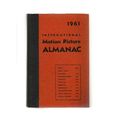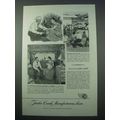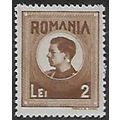Coleraine, Co. Derry, N Ireland - Anderson Park St Patricks Church -postcard 60s
- Condition : Used
- Dispatch : 2 Days
- Brand : None
- ID# : 215801031
- Quantity : 1 item
- Views : 217
- Location : United Kingdom

- Seller : justthebook (+1704)
- Barcode : None
- Start : Fri 17 Feb 2023 16:37:04 (BST)
- Close : Run Until Sold
- Remain : Run Until Sold
More Listings from This Seller view all
Seller's Description
- Postcard
- Picture / Image: Anderson Park and St. Patrick's Church, Coleraine, Co. Derry / Londonderry, Northern Ireland, c.1960s
- Publisher: Dennis Erin's Isle series
- Postally used: no - has pencilled message
- Stamp: n/a
- Postmark(s): n/a
- Sent to: n/a
- Notes / condition:
- Postcard
Please ask if you need any other information and I will do the best I can to answer.
Image may be low res for illustrative purposes - if you need a higher definition image then please contact me and I may be able to send one. No cards have been trimmed (unless stated).
------------------------------------------------
Postage & Packing:
Postage and packing charge should be showing for your location (contact if not sure).
No additional charges for more than one postcard. You can buy as many postcards from me as you like and you will just pay the fee above once. Please wait for combined invoice. (If buying postcards with other things such as books, please contact or wait for invoice before paying).
Payment Methods:
UK - PayPal, Cheque (from UK bank) or postal order
Outside UK: PayPal ONLY (unless otherwise stated) please. NO non-UK currency checks or money orders (sorry).
NOTE: All postcards are sent in brand new stiffened envelopes which I have bought for the task. These are specially made to protect postcards and you may be able to re-use them. In addition there are other costs to sending so the above charge is not just for the stamp!
I will give a full refund if you are not fully satisfied with the postcard.
----------------------------------------------
Text from the free encyclopedia WIKIPEDIA may appear below to give a little background information (internal links may not work) :
*************
Coleraine (/ko?l're?n/; from Irish Cúil Rathain, meaning ""nook of the ferns""[5] [ku?l? '??ah?n?]) is a large town and civil parish near the mouth of the River Bann in County Londonderry, Northern Ireland. It is 55 miles (88.5 km) northwest of Belfast and 30 miles (48.3 km) east of Derry, both of which are linked by major roads and railway connections. City of Derry Airport, 25 miles (40.2 km) to the west, Belfast International Airport, the main regional airport to the south and George Best Belfast City Airport to the south–east are all relatively accessible from Coleraine.
Coleraine had a population of 25,042 people in the 2001 Census. Disposable income is well above the Northern Ireland average. The North Coast (Coleraine and Limavady) area has the highest property prices in Northern Ireland, higher indeed than those of affluent South Belfast.[6] Championship golf courses, scenic countryside and a host of leisure facilities and attractions are all on the doorstep. It has an attractive town centre, a marina and the prestigious Riverside theatre. Coleraine, during the day is a busy town, however at night the town is relatively quiet, with much of the night life in the area located in the nearby seaside towns of Portrush and Portstewart. Coleraine is also home to the one of the largest Polish communities in Northern Ireland.
Coleraine is situated at the lowest bridgeable point of the River Bann, where the river is 90 metres wide. The town square is called 'The Diamond' and is the location of the Town Hall. St. Patrick's Church of Ireland is situated nearby. The University of Ulster campus was built in the 1960s and has brought a high quality theatrical space to the town in the form of the Riverside Theatre, where the quality of production often belies the small size of the town.
Coleraine has been designated as a major growth area in the Northern Ireland Development Strategy. Although the population of the town is only 25,000, Coleraine has a large catchment area. The town also has the advantage of being near some of the most extraordinary landscape in the whole of Europe. In 2002, Coleraine won the Best Kept Town and Ulster in Bloom awards. In 2003, it was selected to represent Northern Ireland in the prestigious Britain in Bloom competition. In the 2010 SuperValu Best Kept Awards Coleraine was named the Best Kept Large Town in Northern Ireland, this is a prestigious award which commends towns throughout Northern Ireland for their work to improve the local environment. It has its own local radio station: Q97.2FM
Coleraine has a long history of settlement. The Mesolithic site at Mount Sandel, which dates from approximately 5935 BC[7] is some of the earliest evidence of human settlement in Ireland.[8]
The Tripartite Life of Saint Patrick records how the town got its name. When Patrick arrived in the neighbourhood, he was received with great honour and hospitality by the local chieftain, Nadslua, who offered him a piece of ground on which to build a church. The spot was next to the river Bann and was overgrown with ferns, which were being burned by some boys to amuse themselves. This incident led to the area being called Cúil Raithin (""nook of ferns""), which was later anglicised as Colrain, Colerain and Coleraine. It was translated by Colgan into Latin as Secessus Filicis.
The town was one of the two urban communities developed by the London Companies in County Londonderry (hence, Londonderry) in the Plantation of Ulster at the start of the 17th century. The slightly skewed street pattern of Coleraine's town centre is legacy of that early exercise in town planning, along with traces of the lines of the ramparts that provided the Plantation town with its defences. In 1637 the Surveyor General of Customs issued a report compiled from accounts of customs due from each port and their ""subsidiary creeks"". Of the Ulster ports on the list, Carrickfergus was first, followed by Bangor, Donaghadee, and Strangford. Carlingford and Coleraine each had £244 customs due and had equal ranking.[9]
With some industrialisation, the expansion of the river port, and the development of the railway, the town expanded significantly throughout the 19th century and into the early part of the 20th century. Coleraine steadily expanded after the Second World War. The population doubled due to major industrial development on extensive suburban sites, the decision to site the New University of Ulster (now known as the University of Ulster) in the town, the expansion of commerce and the development of sporting and recreational facilities. There has been a steady expansion of the urban area from the mid 20th century compact town of less than 1¼ square miles (2 km²), to the present much more dispersed town of about 7 square miles (11 km²). During the Northern Irish Troubles 13 people were killed in or near Coleraine, ten of them in two separate car bomb explosions.
Since 1980 growth has continued but at a slightly more modest pace. In the twenty years to 2001 the town's population increased by 22% to approximately 25,000 but the rate of increase fell from 12% in the 1980s to 8% in the 1990s.[10]
Coleraine is the main town of the world famous Causeway Coast, which attracts over three million visitors per year, spending in excess of £37 million.[11] The world famous Giant's Causeway is a twenty–five-minute bus ride away. The distillery village of Bushmills is well-served by buses from the town and there is a narrow-gauge steam train running in the summer from Bushmills to the Giant's Causeway. Portrush, which is part of the Borough. The train journey takes approximately fifteen minutes from the town to the Causeway. Also north of Coleraine is the scenic coastal town of Portstewart, with fine sandy beach and coastal walks.
North-west of Coleraine lies the small village of Castlerock, with a beach which is essentially a continuation of the beach at Portstewart, separated by the River Bann. Also nearby is the huge beach at Benone Strand and Mussenden Temple, built by Frederick Augustus Hervey, an 18th-century Anglican bishop atop a precipitate cliff and overlooking County Donegal in one direction and Scotland in another. The National Trust managed Downhill forest was part of the Bishop's Palace, and although the Palace itself is now a ruin the gardens are a wonderful place full of strange hidden lakes and gloriously tended flower gardens.
Listing Information
| Listing Type | Gallery Listing |
| Listing ID# | 215801031 |
| Start Time | Fri 17 Feb 2023 16:37:04 (BST) |
| Close Time | Run Until Sold |
| Starting Bid | Fixed Price (no bidding) |
| Item Condition | Used |
| Bids | 0 |
| Views | 217 |
| Dispatch Time | 2 Days |
| Quantity | 1 |
| Location | United Kingdom |
| Auto Extend | No |




 for 1 item(s)
for 1 item(s)














